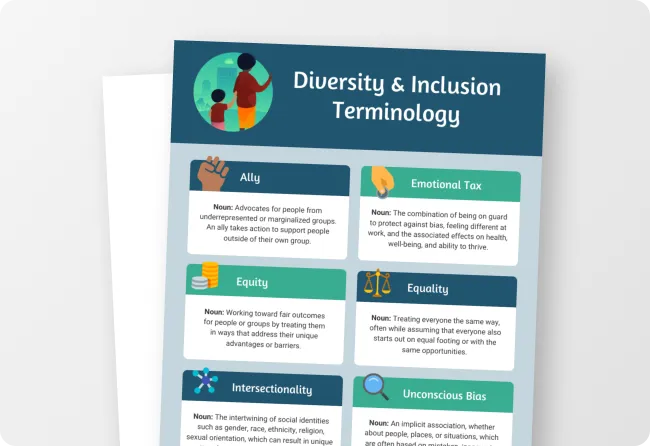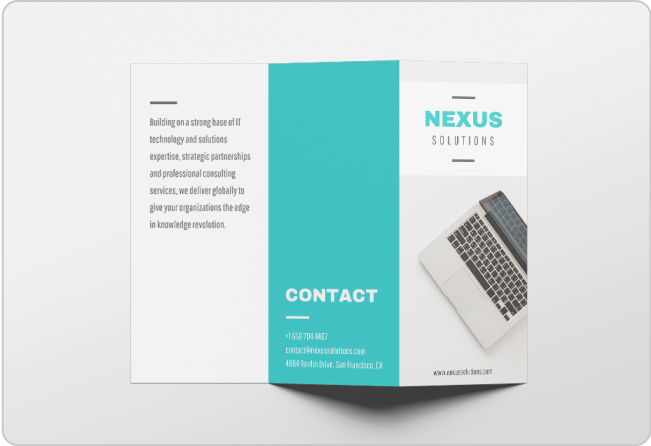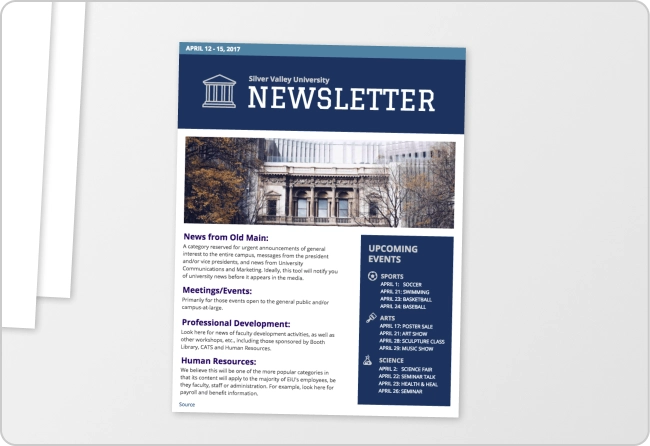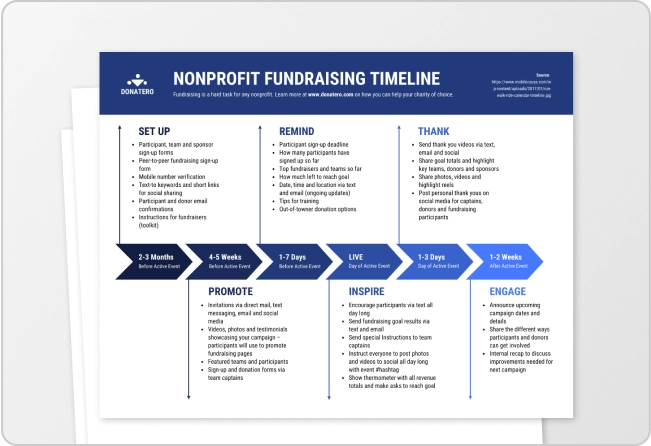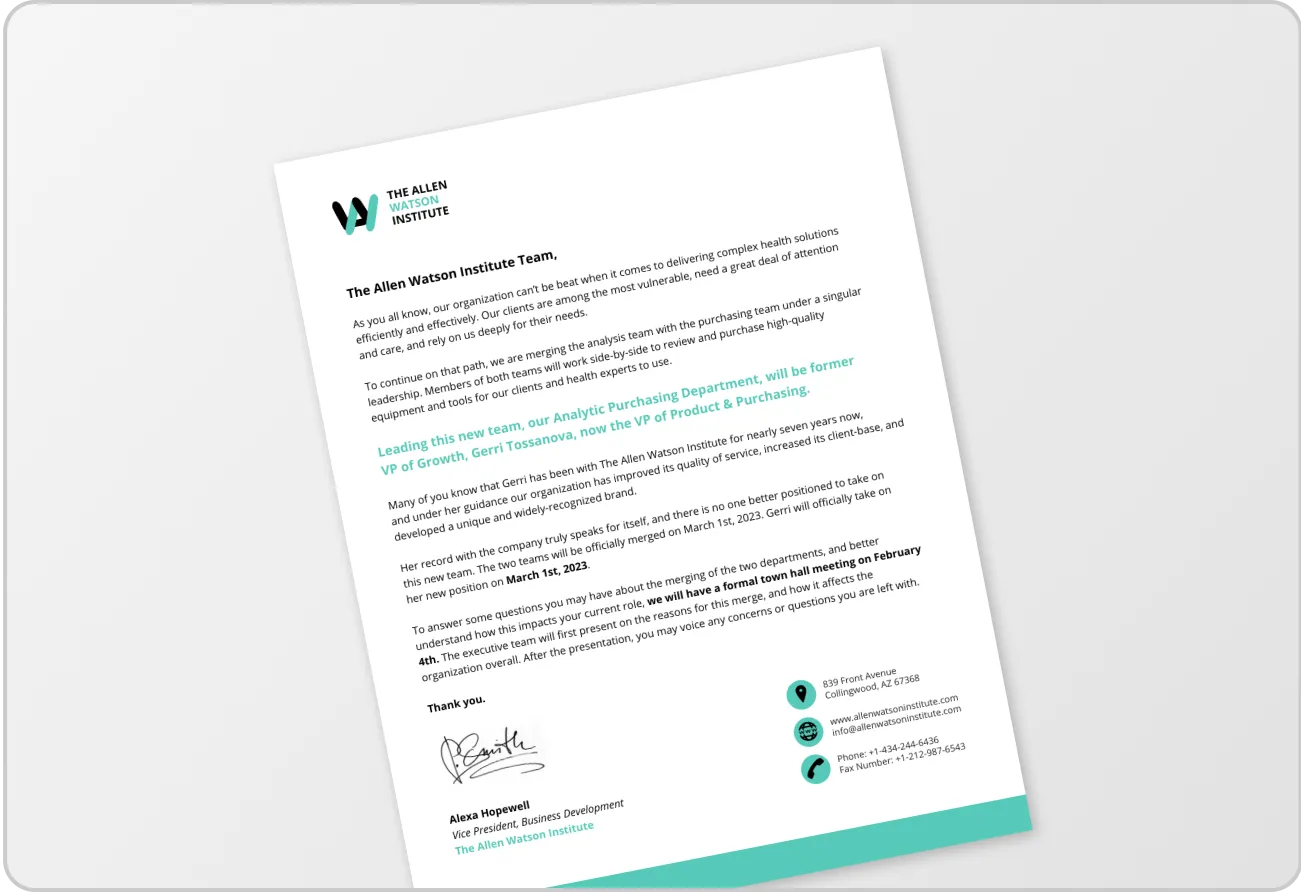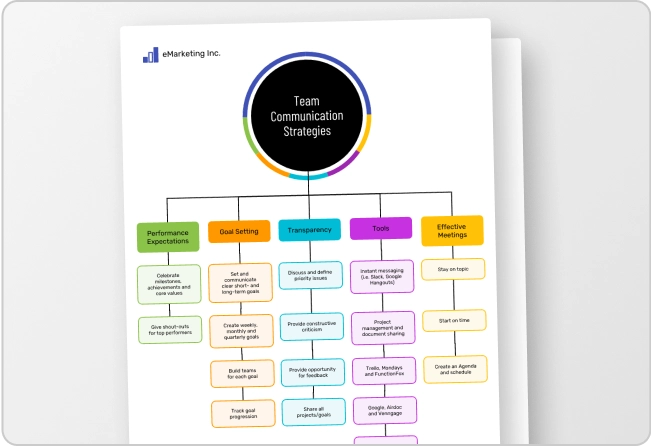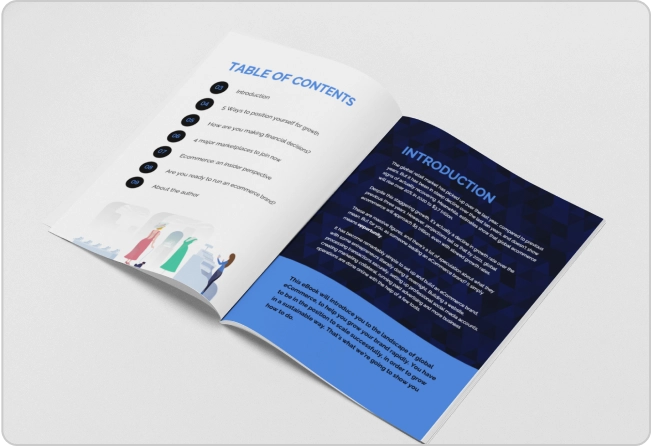
A Performance Improvement Plan (PIP) is a formal tool that outlines areas for employee enhancement, setting clear targets and offering guidance.
It is not just a list of shortcomings; it sets unambiguous objectives for the individual and offers them a roadmap for attaining those milestones. The objective is to foster growth, improve productivity, and ensure that the employee aligns with the company’s goals and values.
When implemented strategically, a PIP can rejuvenate a professional atmosphere, empowering companies to elevate their team’s efficiency, hone their potential, and align with the greater organizational vision.
Creating an effective PIP requires precision, understanding of the employee’s needs, and clarity on the desired results.
For those seeking tools to assist in this process, Venngage offers business plan maker and performance improvement plan templates, simplifying the task of designing a PIP that meets both employee and organizational needs.
What is the purpose of a performance improvement plan?
A Performance Improvement Plan, commonly known as a PIP, is a structured framework designed to assist employees in enhancing their work performance. Workday Integration into the PIP process ensures seamless tracking and management of performance metrics, providing employees with the tools they need to improve effectively.
It’s a proactive approach taken by companies to ensure that team members are performing optimally and aligning with the company’s culture and goals.
There are various reasons why a manager or supervisor might introduce a performance improvement plan.
Often, it’s in response to performance issues that have been observed over a period, such as the past three months.
- Common triggers for a PIP: Errors in tasks, unprofessional behavior, and poor time management are often reasons to initiate a PIP.
- Importance of accurate data handling: When data is mishandled, it jeopardizes the company’s efficiency and can lead to flawed business decisions.
- Clarity is paramount in a PIP: Objectives must be clear and measurable so that both managers and employees understand what success looks like. In fact, research from the Society for Human Resource Management (SHRM) indicates that 75% of employees who undergo well-crafted PIPs experience significant improvements, while 62% of managers believe clear communication is vital for a successful outcome.
- Incorporating best practices: A PIP should include industry-specific best practices to guide the employee toward tangible improvement, such as SPSS practices for data roles.
- Personalization is key: Though a PIP might follow a template, it should be tailored to address the unique challenges and performance issues of the particular employee.
Related: 13+ Constructive Performance Appraisal Examples & Phrases to Simplify Review Season [+ Templates]
10 Performance improvement plans examples
A Performance Improvement Plan (PIP) serves as an essential tool to bridge the gap between current employee performance and the desired outcomes.
These plans offer a structured approach to address deficiencies, provide clarity on expectations, and layout specific actions that can lead to enhanced performance.
Here, we delve into 12 diverse PIP examples to provide a comprehensive understanding of its application across various scenarios.
Performance improvement plan example for employees
Crafting a performance improvement plan for employees requires a comprehensive understanding of the existing performance issues, alongside the foresight to outline actionable measures for enhancement.
Such a plan acts as a beacon, guiding employees through the sometimes foggy terrain of professional expectations and responsibilities.
Things to include in a performance Improvement plan for employees:
Employee name: Elisa Sebastian
Job title: Data entry specialist
Staff no: DE12345
Department: Data Management
First meeting date: 03/10/2023
Performance problem: Inaccuracies in data entry, including mismatches of customer details with their corresponding records and repeated instances of duplicated entries.
Reason for poor performance: After a detailed review, it was observed that the main reasons for these errors were not double-checking entries against source documents and missing out on using data validation methods within the software.
Action to be taken:
- Attend a training session with the IT department within the next week to get acquainted with advanced data validation tools.
- Allocate the first 30 minutes of each workday to review the previous day’s entries to identify and correct potential inconsistencies or errors.
- For the next three months, collaborate with Harold Das , Senior Data Entry Specialist, for a weekly review of your data entries. After demonstrating consistent accuracy over this period, the frequency of reviews can be adjusted.
Performance improvement plan example for poor leadership
Leadership forms the bedrock upon which the company culture and team dynamics are built. When a team member, especially in a managerial or supervisory role, exhibits signs of poor leadership, it can ripple through the entire team, leading to decreased morale, increased staff turnover, and an overall decline in work performance.
A performance improvement plan targeting poor leadership needs to focus on measurable objectives that address specific leadership deficiencies. This could range from a lack of constructive feedback provided to team members to the inability to address performance issues in a proactive manner.
Employee name: Leo Das
Job title: Content writer team lead
Conversation date: 05/10/2023
Next review date: 12/01/2023
Example of performance during review period: It was observed that Leo struggled to lead the content writing team effectively. There were reports of missed deadlines, lack of clarity in project objectives, and feedback from team members feeling unsupported or unclear about their roles.
Additionally, two team members expressed concerns about not receiving timely feedback on their work, leading to repeated mistakes.
Improvement plan:
- Leadership training: Leo should attend a leadership training workshop within the next month to enhance his leadership skills, focusing on communication, delegation, and team motivation.
- Regular team check-ins: Leo should implement weekly check-ins with each team member. These sessions will focus on understanding their challenges, providing timely feedback, and clarifying project objectives.
- Feedback mechanism: Introduce a structured feedback system where team members can provide anonymous feedback about the leadership style, concerns, and areas of improvement. Review this feedback monthly and take actionable steps to address the concerns.
- Time management: Enroll in a time management course to ensure that tasks are delegated, reviewed, and completed on time. This will help in keeping the team aligned and meeting project deadlines.
- Mentorship: Pair Leo with a senior leader in the company for a three-month mentorship program. Regular interactions with the mentor will provide guidance and share best practices in team management and leadership.
For structured planning and progress tracking, consider using a project management plan to align goals, timelines, and responsibilities throughout the improvement process.
Related: 14 Individual Development Plan Examples & Templates
Performance improvement plan example for communication issues
Communication is the lifeline of a cohesive and productive team. When there are lapses in this vital aspect, it can lead to misunderstandings, inefficiencies, and a disrupted work environment.
A performance improvement plan targeting communication issues dives deep into understanding the root cause.
The plan should offer a clear path to improvement, which can include communication training, tools to aid in clearer data processing, or sessions focusing on SPSS best practices if the communication issue revolves around data presentation.
Employee name: Danesh Muthuvel Pandian
Job title: Marketing specialist
Conversation date: 10/03/2023
Next review date: 01/10/2024
Goals & objectives:
Enhance effective communication to foster clearer understanding among team members, minimize errors arising from miscommunication, and ensure stakeholders are consistently kept in the loop.
Action & strategies:
- Attend communication workshops to better articulate ideas and feedback.
- Initiate weekly team meetings to discuss ongoing projects, potential bottlenecks, and team concerns, and implement some of Robert’s Rules of Order to ensure everyone has a fair chance to speak.
- Implement a structured approach to emails ensuring clarity, conciseness, and completeness.
- Use collaboration tools like Slack or Teams more effectively, ensuring important messages are categorized appropriately.
Timeline:
- Communication workshops: Scheduled for the first two weekends of November 2023.
- Weekly team meetings: Every Wednesday starting from November 15, 2023.
- Email communication improvements: Immediate implementation with a review after two weeks.
- Collaboration tools training: November 21-22, 2023.
Measurement/Success criteria:
- Achieve at least 90% positive feedback on improved communication in the next team survey.
- Reduce misunderstandings arising from miscommunication by 80% in the next quarter.
- Increase in stakeholder satisfaction regarding project updates and clarity by Q1 2024.
- 100% team participation and effective use of collaboration tools by December 2023.
Training and development opportunities:
- Communication workshop: Designed to enhance verbal and written communication skills.
Timeline: November 5-6 and November 12-13, 2023. - Effective email writing course: To ensure clarity and effectiveness in written communication.
Timeline: November 19, 2023. - Collaboration tools mastery: Ensure the team can effectively utilize tools for better communication.
Timeline: November 21-22, 2023.
Budget:
- Communication workshops: $1,200
- Email writing course: $400
- Collaboration tools training: $600
Performance improvement plan example for unprofessional behavior
In a professional setting, decorum and appropriate behavior are non-negotiable. Unprofessional behavior, whether in team meetings, towards peers, or even in casual interactions, can significantly impact company culture and the work environment.
Addressing such issues requires a performance improvement plan tailored to provide clarity and actionable guidance. This plan should start with a clear idea of the instances of unprofessional behavior exhibited by the particular employee.
Employee name: Aahana Neha
Supervisor: Morgan Hayes
Date: 03/10/2023
Employee ID number: NEHA12345
Reason for improvement plan: Aahana has exhibited repetitive unprofessional behavior, including frequent tardiness and inappropriate comments to colleagues.
Previous disciplinary actions:
- Date: 01/05/2023: Addressed for tardiness.
- Date: 02/15/2023: Counseled for using inappropriate language with a team member.
- Date: 02/28/2023: Written warning for disrespectful behavior during a team meeting.
Steps for improvement:
- Attend a professionalism and workplace etiquette workshop by the end of October 2023.
- Engage in bi-weekly check-ins with the HR department for behavioral feedback and necessary adjustments over the next three months.
Required result: Aahana is expected to demonstrate consistent punctuality and foster a respectful, positive environment for her colleagues. Failure to show marked improvement or recurrence of inappropriate behavior will result in further disciplinary action, up to and including termination.
Performance improvement plan example for poor quality of work
Delivering consistent quality of work is a pillar on which organizational success rests. When an employee’s output doesn’t meet performance expectations, it’s crucial to take prompt and constructive action.
A performance improvement plan for poor quality of work focuses on identifying specific areas of concern. Whether it’s errors in a data entry task, inability to process large data sets accurately, or general sloppiness in job responsibilities, the plan must pinpoint these areas. The next phase involves providing the necessary tools and training to improve their work.
Employee name: Risven Premen
Review period: January 2023 – September 2023
Department: Product Design
Meeting time: 10:30 AM, October 6, 2023
Example of performance during review period: Risven’s recent designs have lacked the precision and innovation expected of his role. Feedback from clients indicates dissatisfaction with the final outputs on two major projects.
Improvement plan: Risven is expected to attend a two-week advanced design workshop by the end of October. Additionally, all subsequent designs for the next quarter should be peer-reviewed before submission to clients.-t-
To support long-term improvement efforts, you can also build a structured project plan that outlines objectives, timelines and deliverables tied to performance goals.
Performance improvement plan example for customer service
Customer service is often the frontline of a company’s reputation. When an employee fails to deliver in this domain, it can lead to tangible business losses and a tarnished company image.
A performance improvement plan tailored for customer service issues will begin by delineating specific performance issues, including measuring customer service accurately, whether it’s mishandling customer complaints, not processing inputs reflectively, or not adhering to the company’s customer service standards.
Employee name: Suriakala Holmes
Supervisor: Marianne Fisher
Date: 06/14/2023
Employee ID number: SKALA5678
Reason for improvement plan: Suriakala has received multiple complaints from customers regarding a lack of responsiveness and impatience during interactions.
Previous disciplinary actions:
- Date: 01/18/2023 – Received feedback on not adequately addressing a customer’s concerns, leading to an escalated complaint.
- Date: 03/10/2023 – Noted for taking longer than the standard response time to get back to multiple customer inquiries.
- Date: 05/28/2023 – Documented incident of not using the company-prescribed greeting and sign-off during a client call.
Steps for Improvement:
- Enroll in a customer service training program to enhance communication and problem-solving skills.
- Have weekly evaluations with the team leader for the next two months to monitor and provide feedback on customer interactions.
Required Result: Suriakala must demonstrate consistent patience, active listening, and professionalism in all customer interactions. A recurrence of negative feedback or non-compliance with these standards within the next review period will lead to further disciplinary actions, which may include termination.
Sales performance improvement plan example for sales professional
Sales performance directly impacts revenue and business growth. When a sales professional consistently underperforms, it can affect team morale, pipeline efficiency, and client relationships. A performance improvement plan for sales should focus on measurable sales goals, client engagement, and lead conversion strategies.
Employee name: Jordan Reyes
Job title: Sales Executive
Conversation date: 04/15/2023
Next review date: 05/15/2023
Example of performance during review period: Jordan consistently missed monthly sales quotas for the last two quarters. Pipeline follow-up was irregular, and CRM activity showed low client engagement. Team meetings revealed a lack of preparation for client calls and limited product knowledge.
Improvement plan:
- Sales training: Complete advanced sales and product training within the next two weeks to improve product knowledge and objection handling.
- CRM management: Update CRM daily with detailed notes on all client interactions. Track follow-ups and conversions weekly.
- Call shadowing: Shadow a top-performing colleague twice a week to learn effective outreach strategies.
- Performance tracking: Submit a weekly sales report highlighting leads contacted, meetings booked, and deals closed.
- Coaching sessions: Attend weekly 1:1 coaching with the sales manager to review goals, improve strategy, and monitor progress.
Performance improvement plan example for software developer
When a developer struggles with code quality, missed deadlines, or collaboration, it can slow down product delivery and create tech debt. A targeted PIP should focus on code review, time management, and collaborative development practices.
Employee name: Priya Nair
Job title: Front-End Developer
Conversation date: 03/01/2023
Next review date: 06/01/2023
Example of performance during review period: Priya missed several sprint deadlines, and her code submissions frequently required rework due to bugs and inconsistent formatting. Team retrospectives revealed communication gaps during peer reviews and difficulty adapting to the new framework.
Improvement plan:
- Technical upskilling: Complete training on the team’s front-end framework and best practices for clean code by end of month one.
- Code quality checks: Participate in weekly peer code reviews and maintain 90% pass rate on the first submission.
- Agile practices: Attend daily stand-ups and submit accurate time estimates for sprint planning.
- Mentorship: Pair with a senior developer for biweekly check-ins and code pairing sessions.
- Feedback loop: Submit weekly self-assessments highlighting learnings and areas for improvement.
Call center performance improvement plan example
Call center roles demand strong communication, empathy, and efficiency. When an agent struggles with handling time or customer satisfaction, it can hurt the team’s performance metrics and the overall customer experience.
Employee name: Carla Mendoza
Job title: Customer Support Agent
Conversation date: 06/10/2023
Next review date: 07/10/2023
Example of performance during review period: Carla’s average call handling time exceeded the department benchmark, and her customer satisfaction scores were consistently below 75%. Call audits showed issues with listening skills and lack of empathy in difficult interactions.
Improvement plan:
- Customer service training: Attend a customer communication and empathy workshop within the next two weeks.
- Call review sessions: Review three recorded calls per week with the supervisor to identify improvement areas and best practices.
- Script adherence: Follow updated call scripts and document resolution summaries accurately.
- Performance goals: Reduce average call handling time by 20% and reach a satisfaction score of 85% within 30 days.
- Coaching support: Weekly coaching sessions with the team lead to practice handling complex queries and emotional customer interactions.
Nursing performance improvement plan example
In healthcare, performance issues can impact patient safety and care quality. A nursing PIP should focus on accuracy, timeliness, and professional communication.
Employee name: Thomas Blake
Job title: Registered Nurse
Conversation date: 02/20/2023
Next review date: 04/20/2023
Example of performance during review period: Thomas had recurring issues with delayed charting and missed medication administration windows. Two incidents were documented where patient notes were incomplete, impacting handovers and continuity of care.
Improvement plan:
- Documentation training: Attend an EMR system refresher training to improve accuracy and timeliness in charting.
- Medication protocols: Review medication administration guidelines and shadow a senior nurse for two shifts per week.
- Time tracking: Use a checklist system to ensure all tasks are completed within scheduled times.
- Peer review: Participate in weekly chart audits with peers to identify areas for improvement.
- Mentorship: Assigned a clinical mentor for regular check-ins and support over a 60-day period.
How to write a performance improvement plan?
In a competitive work environment, consistent performance is essential—but occasional dips happen. That’s where a Performance Improvement Plan (PIP) comes in. It provides a structured, supportive way to help employees get back on track. In fact, recent data shows that 58% of employees see improvement after going through a PIP, emphasizing the value of clear guidance and ongoing support.
With the right approach and a focus on what truly matters, creating an effective PIP becomes much more manageable.
1. Identify the performance issues
Before drafting the plan, it’s imperative to have a clear understanding of the performance issues. Whether it’s inconsistencies in a data entry task, unprofessional behavior during team meetings, or simply not meeting performance expectations, pinpointing the problem is the first step.
2. Specify measurable objectives
Your PIP should include measurable objectives that are specific to the employee’s role. This could be about processing a particular number of data sets accurately, improving time management, or any other quantifiable performance goals relevant to the employee’s job responsibilities.
3. Detail the action plan
Lay out actionable steps the employee needs to undertake to improve their work. Some of the steps that can be taken involve completing training sessions, attending workshops on SPSS best practices, or simply dedicating more focus to a particular data entry task. Make sure each step is clearly defined, achievable, and aligned with the improvement goal.
4. Set clear performance standards
It’s essential to ensure the employee understands the expected performance standards. These standards should provide a clear path to what is considered acceptable and exceptional in their role.
5. Schedule regular check-ins
Regular check-ins with the manager or supervisor are pivotal. The reason for this is that it provides an opportunity for constructive feedback, allows for course corrections if needed, and helps measure success at regular intervals.
6. Define the review period
Specify a timeline for the PIP, whether it’s the upcoming three months or another duration. By the end of this period, during the final review, there should be discernible improvement in the employee’s performance.
7. Discuss potential outcomes
It’s essential to discuss the potential outcomes with the employee. If they meet or exceed the performance expectations, what will be the next steps? Conversely, if the employee fails to show improvement, outline any potential disciplinary action or changes in job responsibilities.
8. Incorporate feedback mechanisms
Constructive feedback is the backbone of any PIP. Whether it’s feedback from team members, superiors, or even self-assessment, the inputs should reflect data accurately and provide insights into areas of improvement and progress.
9. Make use of templates
To streamline the process and ensure consistency, consider using performance improvement plan templates. These templates usually encompass best practices and can be tailored to fit specific situations.
10. Conclude with mutual understanding
Once the PIP is drafted, discuss it with the particular employee. Ensure they understand the plan’s intent, the expectations, and the consequences. This mutual understanding is crucial for the plan’s success.
Related: How to Create a Process Improvement Plan [20+ Templates Included]
Tips to address poor performance while maintaining their self-esteem
The performance of each team member plays a pivotal role in the overall success of an organization. While it’s crucial to address dips in performance, it’s equally essential to ensure that employees’ self-esteem remains intact throughout the process.
Addressing performance issues doesn’t have to be a demoralizing exercise; instead, it can be a constructive and uplifting experience.
Here are some tips to address poor performance while bolstering an individual’s self-worth:
- Open dialogue: Begin with a private conversation, ensuring the employee understands that the goal is improvement, not criticism. This provides a safe space for them to share any challenges they’re facing, be it work performance or external factors.
- Constructive feedback: When discussing performance issues, be specific about the areas that need attention. Use examples, such as pointing out errors in a task, to make your feedback tangible and clear, but always pair criticism with a suggestion for improvement.
- Focus on strengths: Even as you point out areas of concern, highlight the individual’s strengths and past achievements. This ensures they know their overall value to the team and the company.
- Use a structured approach: Implement a performance improvement plan (PIP) that offers a clear path to success. Performance improvement plan or performance review templates can provide a structured format to help guide this process.
- Training and resources: If an employee is struggling with specific tasks, such as data processing or time management, offer additional training or resources. It shows that the company is invested in their growth and willing to provide the tools they need.
- Set measurable goals: Instead of vague instructions, set clear, measurable objectives. This allows the employee to understand what’s expected and provides a roadmap for improvement.
- Frequent check-ins: Regularly review progress with the employee, offering praise for improvements and discussing any ongoing challenges. This ensures they feel supported throughout their improvement journey.
- Promote a supportive work environment: Company culture plays a significant role in how feedback is received. Foster an environment where continuous learning and growth are valued, and mistakes are seen as opportunities for growth.
- Avoid public criticism: Address performance issues privately. Avoid discussing these concerns in team meetings or other public forums, which can be detrimental to an employee’s self-esteem.
- Affirm commitment: Make sure the employee knows that the end goal is to help them meet performance expectations and grow in their role, not to push them out or replace them.
Read Also: How to Write a Performance Review That Inspires Growth (With Examples & Templates)
Performance improvement plan FAQs
How long should a PIP last?
A Performance Improvement Plan (PIP) typically lasts 30, 60 or 90 days, depending on the nature and severity of the performance issues. A 30-day PIP is often used for minor concerns, while 60- or 90-day plans allow more time for development and measurable progress. The duration should align with the employee’s role and the complexity of the improvement areas.
What are SMART goals in a PIP?
SMART goals in a PIP are Specific, Measurable, Achievable, Relevant and Time-bound objectives set to help employees improve performance. For example, instead of saying “improve communication,” a SMART goal would be “submit weekly project updates to the team by Friday noon for the next 8 weeks.” These goals provide clarity and make progress easier to track.
Final thoughts
It’s evident that a well-crafted PIP is more than just a remedial tool. It’s a strategic asset, much like the nourishing blend of lemon water for our wellbeing. These plans, when implemented effectively, serve as a beacon, guiding employees back to the path of efficiency and excellence.
Every organization, regardless of its size or industry, will at some point need to address performance hiccups. Instead of viewing these moments as setbacks, it’s pivotal to see them as opportunities for growth, development, and forging stronger team dynamics. For example, you could offer wellness tips via email that can improve your staff engagement. These small gestures can also show your staff that you value them.
For those seeking to design impactful Performance Improvement Plans, Venngage’s business plan maker stands as a valuable resource, offering customizable performance improvement plan templates to cater to diverse needs.


































